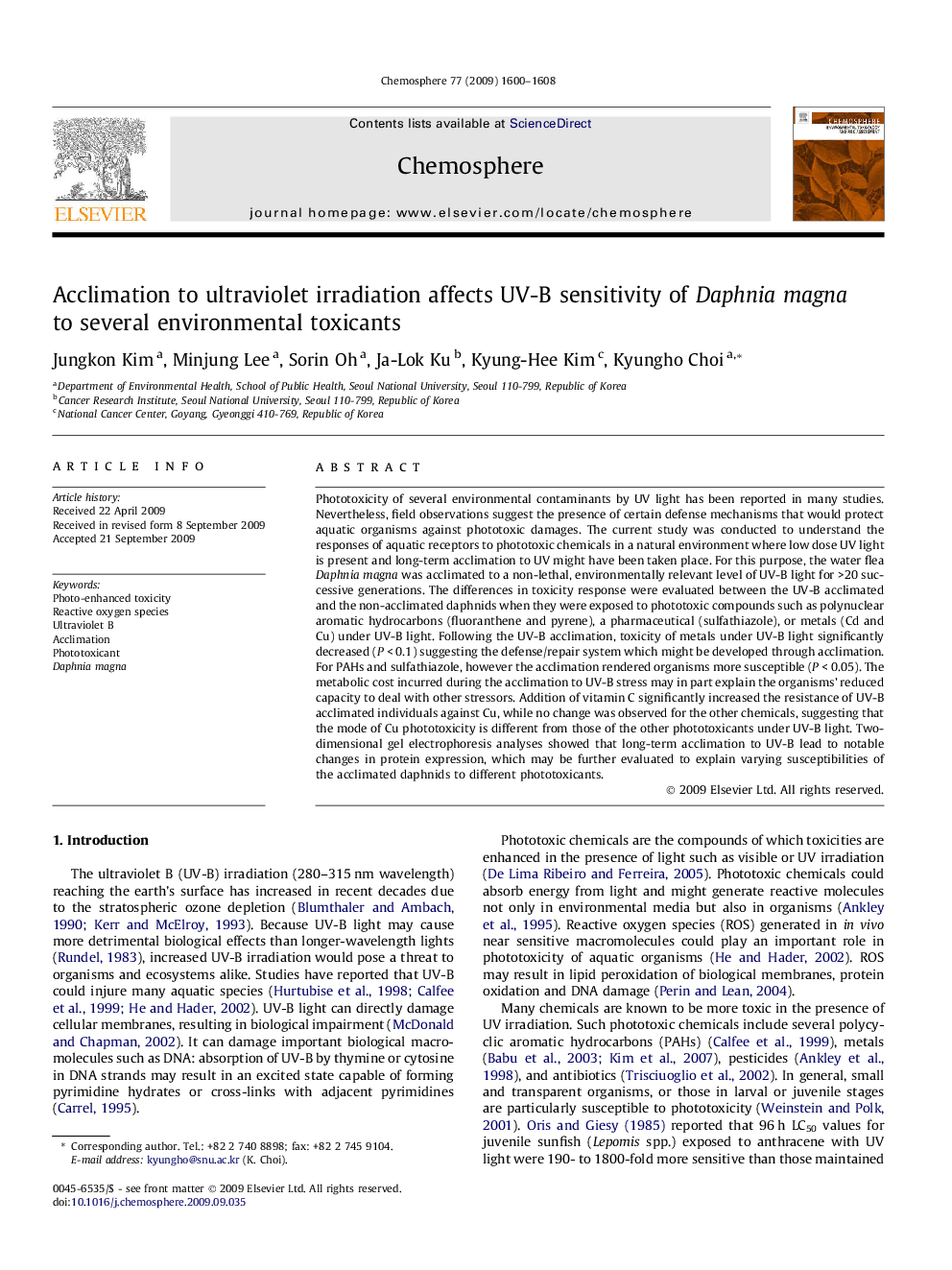| کد مقاله | کد نشریه | سال انتشار | مقاله انگلیسی | نسخه تمام متن |
|---|---|---|---|---|
| 4412617 | 1307645 | 2009 | 9 صفحه PDF | دانلود رایگان |

Phototoxicity of several environmental contaminants by UV light has been reported in many studies. Nevertheless, field observations suggest the presence of certain defense mechanisms that would protect aquatic organisms against phototoxic damages. The current study was conducted to understand the responses of aquatic receptors to phototoxic chemicals in a natural environment where low dose UV light is present and long-term acclimation to UV might have been taken place. For this purpose, the water flea Daphnia magna was acclimated to a non-lethal, environmentally relevant level of UV-B light for >20 successive generations. The differences in toxicity response were evaluated between the UV-B acclimated and the non-acclimated daphnids when they were exposed to phototoxic compounds such as polynuclear aromatic hydrocarbons (fluoranthene and pyrene), a pharmaceutical (sulfathiazole), or metals (Cd and Cu) under UV-B light. Following the UV-B acclimation, toxicity of metals under UV-B light significantly decreased (P < 0.1) suggesting the defense/repair system which might be developed through acclimation. For PAHs and sulfathiazole, however the acclimation rendered organisms more susceptible (P < 0.05). The metabolic cost incurred during the acclimation to UV-B stress may in part explain the organisms’ reduced capacity to deal with other stressors. Addition of vitamin C significantly increased the resistance of UV-B acclimated individuals against Cu, while no change was observed for the other chemicals, suggesting that the mode of Cu phototoxicity is different from those of the other phototoxicants under UV-B light. Two-dimensional gel electrophoresis analyses showed that long-term acclimation to UV-B lead to notable changes in protein expression, which may be further evaluated to explain varying susceptibilities of the acclimated daphnids to different phototoxicants.
Journal: Chemosphere - Volume 77, Issue 11, December 2009, Pages 1600–1608